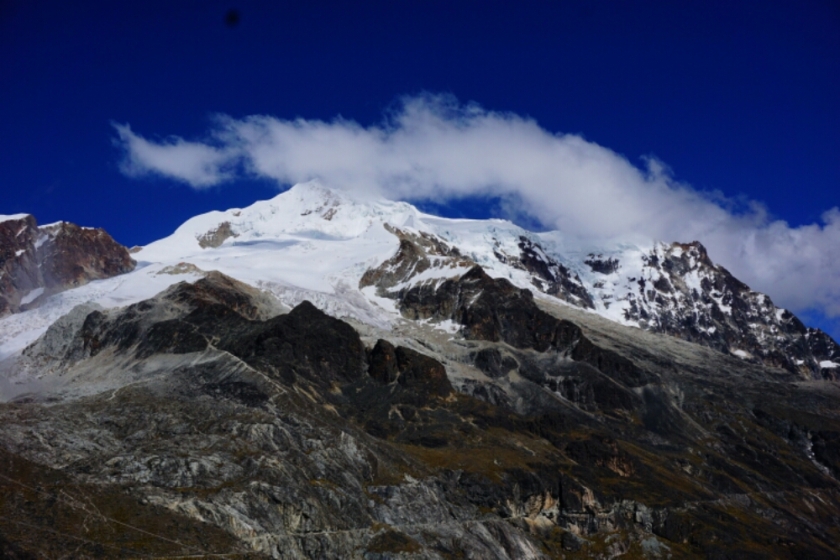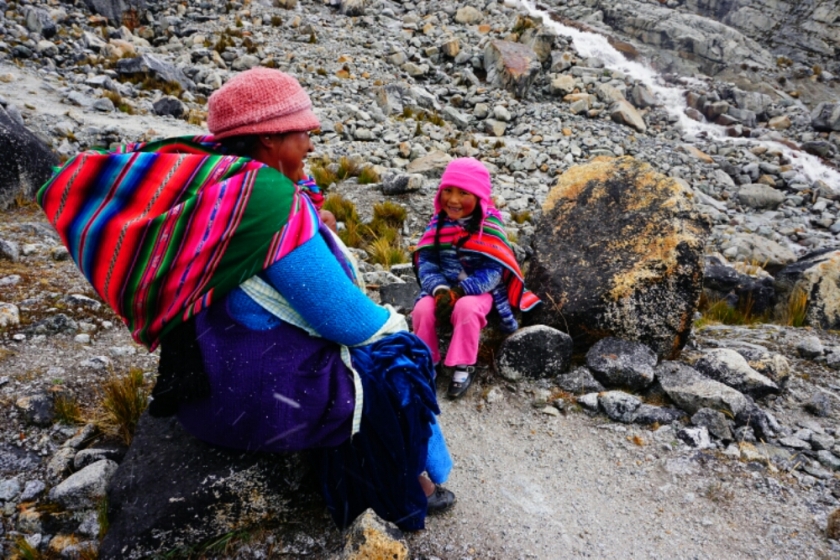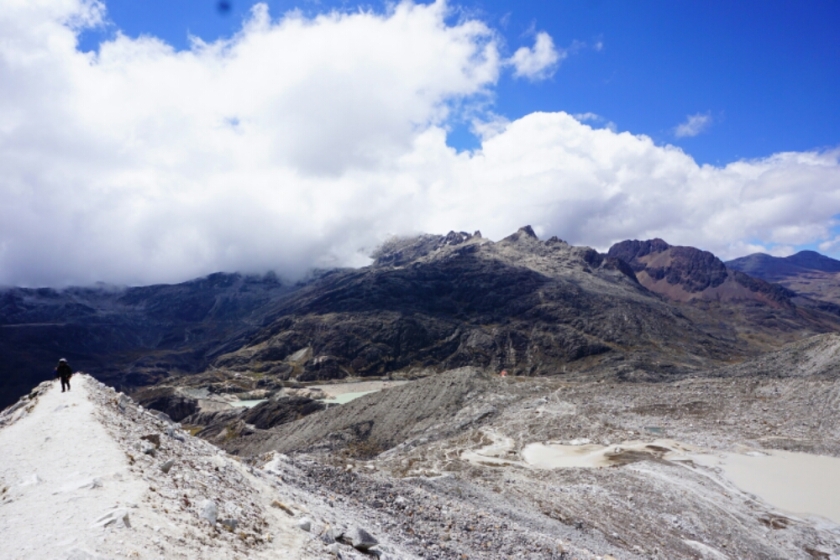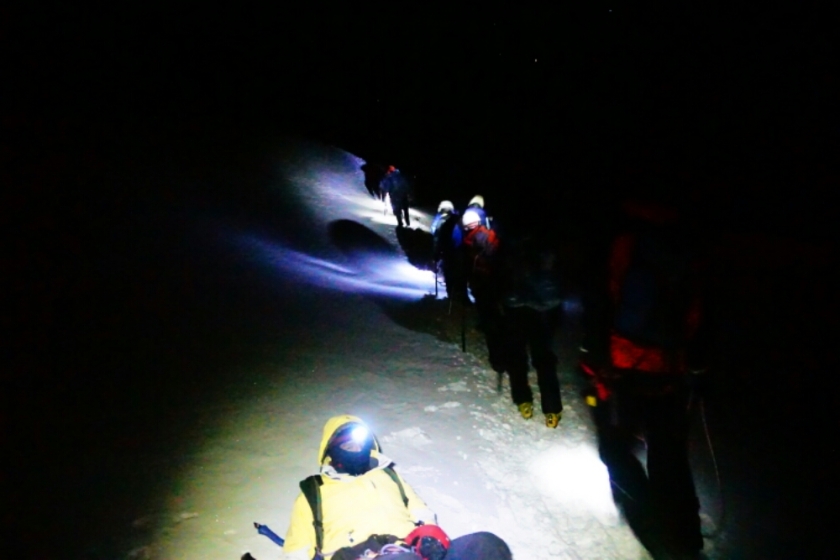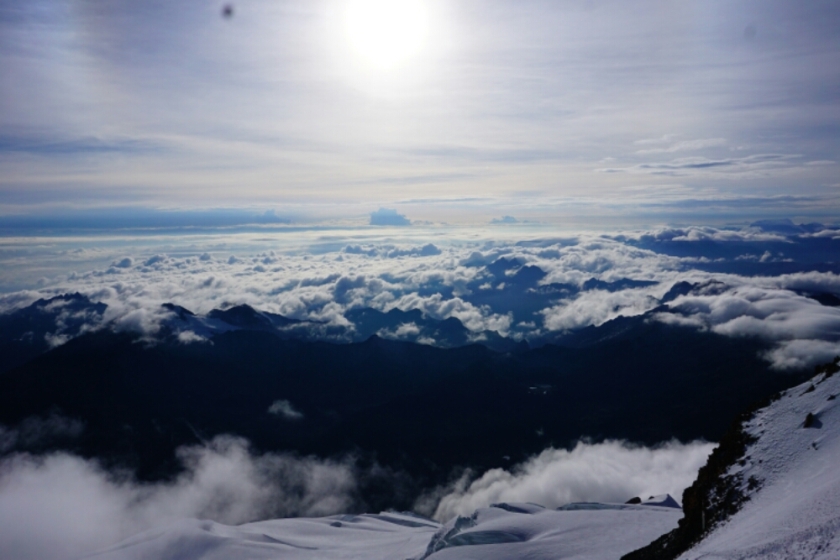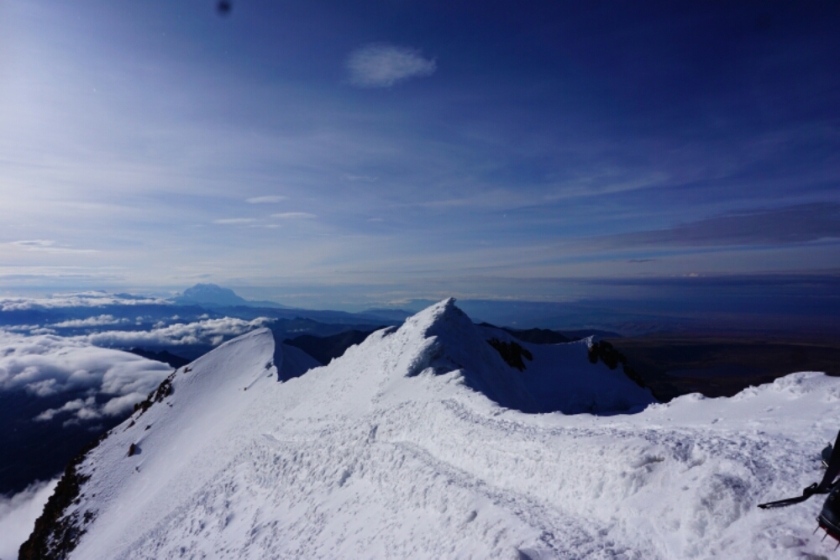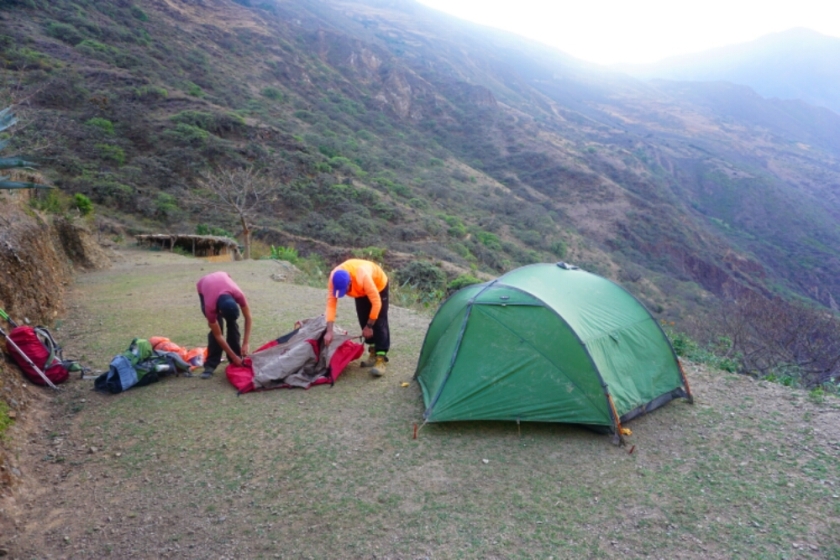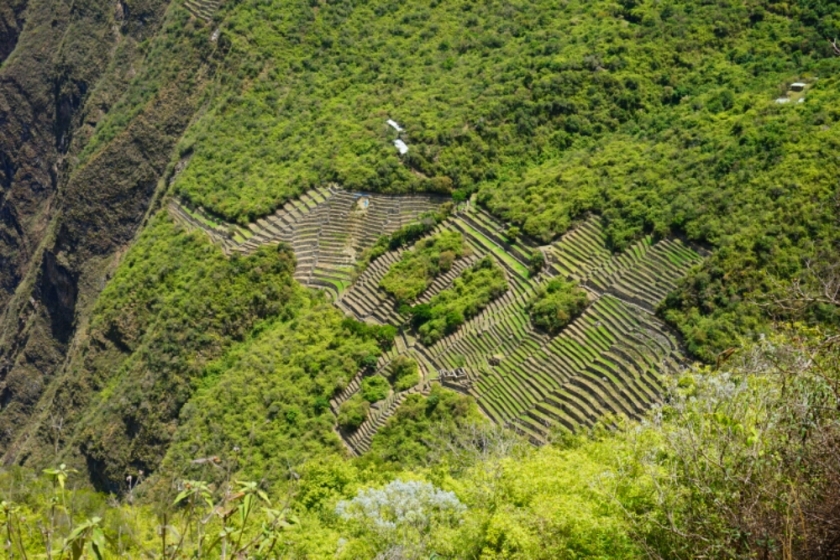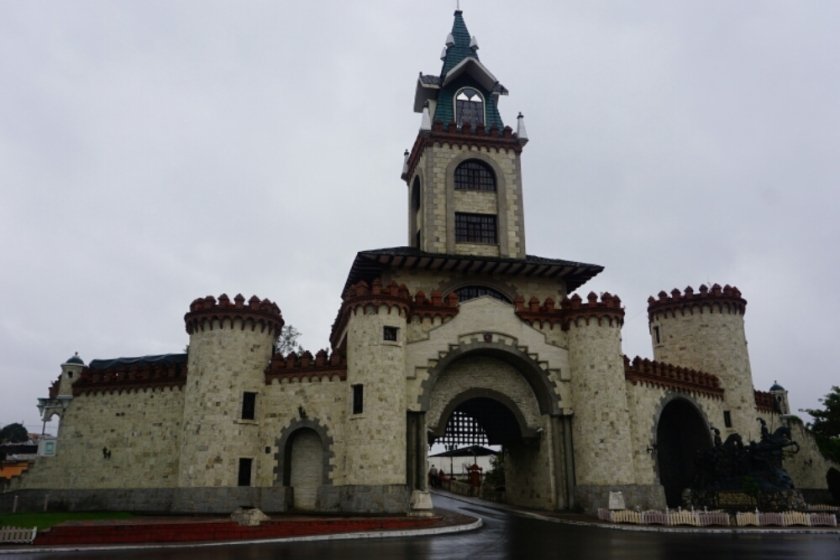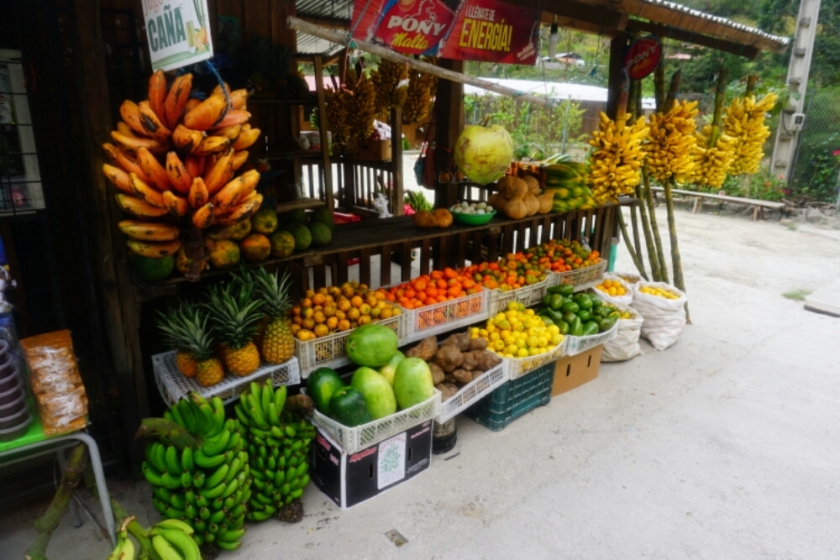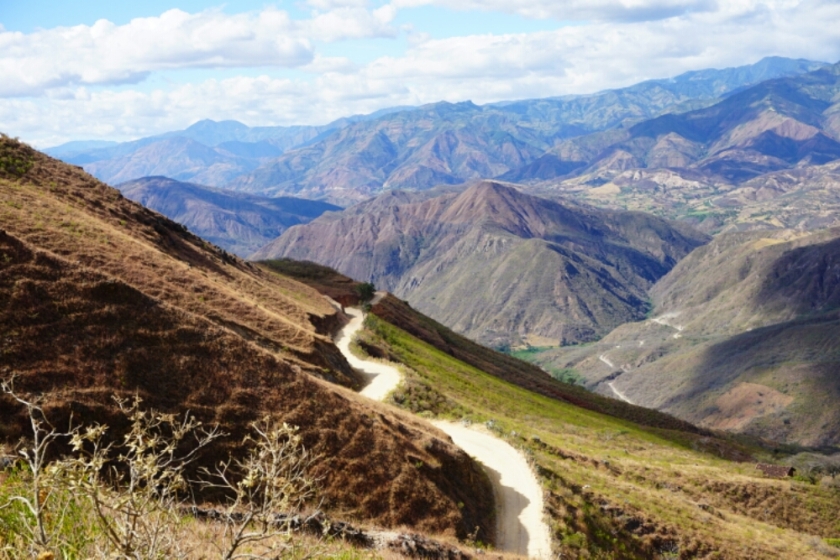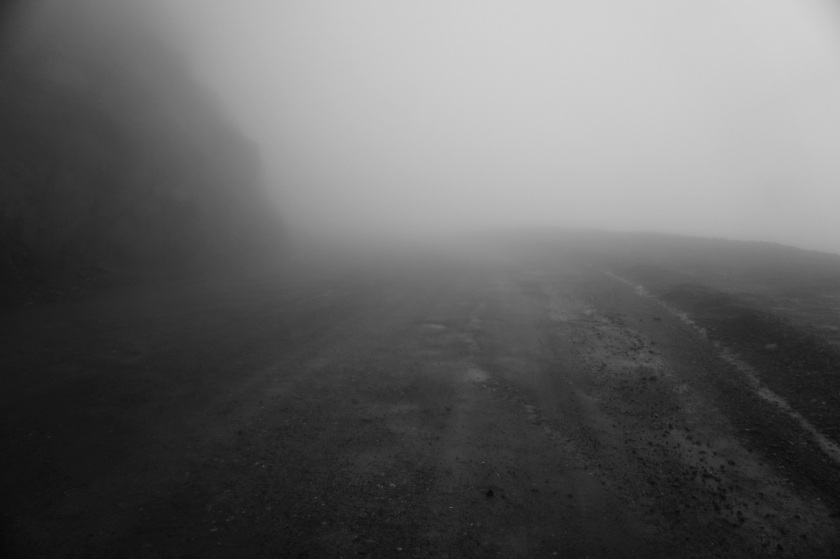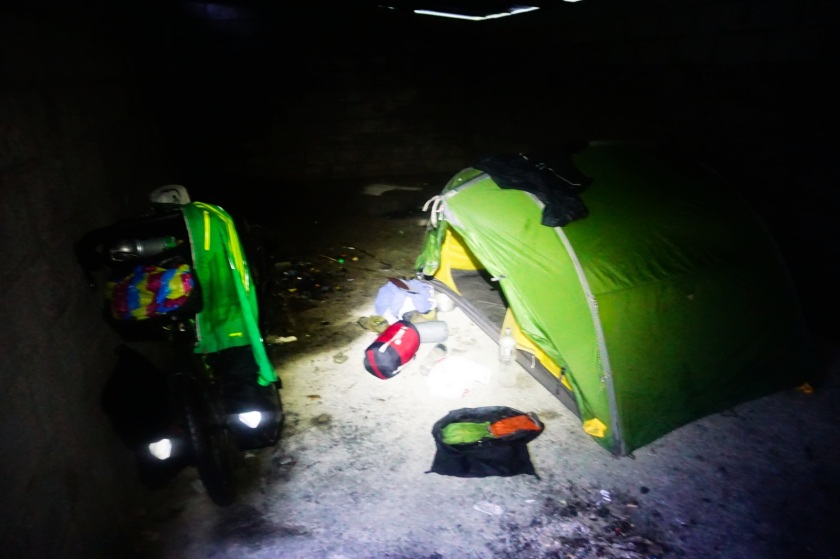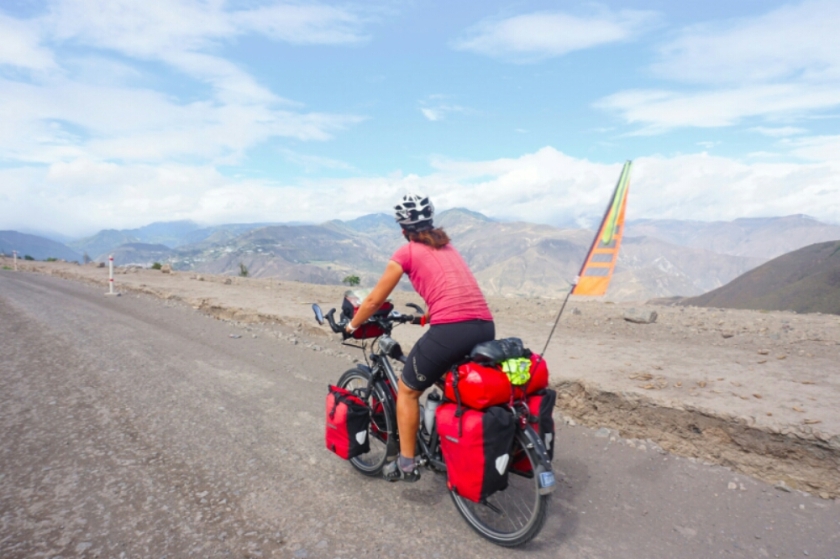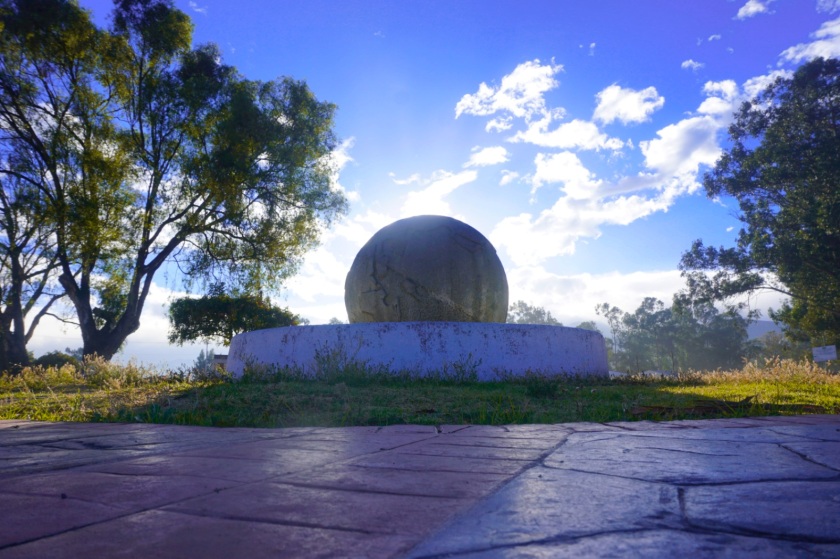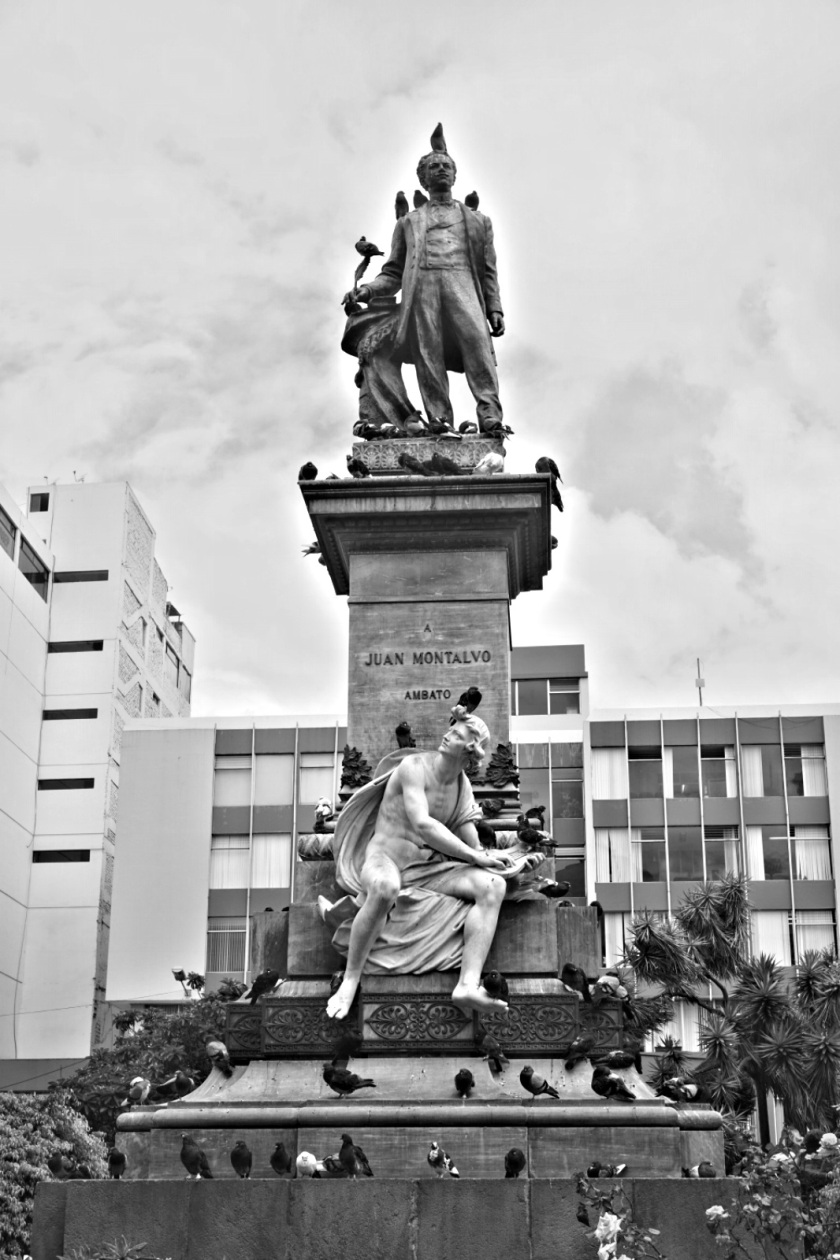San Pedro, a oasis in many regards after a week of tough cycling in the South of Bolivia. The famous route of the Lagunes on an average altitude of 4300 meters, without many possibilities of food and water supply, heaps of climbing, lots of strong winds, cold nights, intense sun, dry air and paths covered with sand and rocks. It was definitely the hardest section of my way down south so far. BUT, it was so worth it! Every single day the landscape gave me new energy! But let’s start in Oruro, where I met Sam again to take the train to Uyuni!
It was a beautiful travel trough on the flat altiplano. We saw a thousands of flamencos in the huge lake of Poopo, before the sunset atmosphere encased us with a wonderful play of colours.



A interesting spot in Uyuni were the old trains whose shapes out of steel rust in the surrounding sand and create an special atmosphere especially during the light of a further sunset.



We left to the Salar de Uyuni where we camped in the middle of nowhere on this huge white field of salt. It was very windy, so that we had to wait for the sunset again to put up our tents afterwards, when the wind was subsiding.




We left the middle of the Salar, but camped another time on the salt, this time mixed with clay and therefor easier to mount our tents into the ground. In the night a sandstorm swept across our housings but both tents withstood the force of nature.


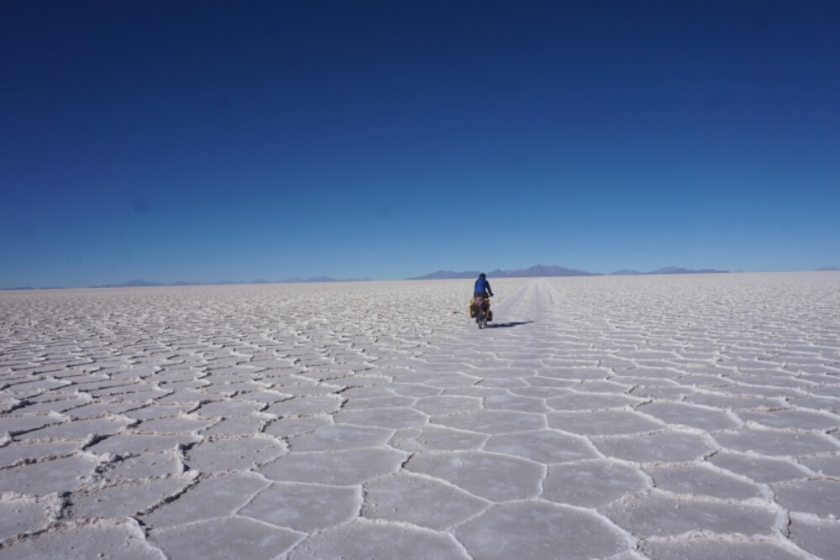

In San Juan Sam decided to go directly to Chile, so I was on my own to proceed towards some days of adventure in the mountains of Bolivia. After some comperative easy kilometers on another plane salt lake I faced the first climb. It was horrible to ride, so that I had to push my bike several times. I first glimpse on what was coming in the next few days. I imagined to arrive at the short section of the main road but I ended up settle down for the night a few kilometers before.


The second day I arrived at the first lake, Laguna Cañapa, where I observed the birds, flamencos and seagulls, before I cooked myself some mashed potatoes.




For the night I arrived at the Laguna Hediondo where I asked to camp next to the Ecolodge de Los Flamingos. But instead I was offered to stay inside. They even provided me water and breakfast for free. Very nice people, so that I gave them my beani as a present when I left in the next morning.




On my further way I saw another cyclist in the distance nd when I got closer I saw that it was Camille, a friend I’ve been hiking with near Cusco. He had a problem with its pedal, but first we cycled together and found a nice shelter to camp in the evening.



To get out of the tent in the morning some motivation was always needed, cause the temperature at night and in theearly hours wasn’t that comfortable. During the day I passed some rock formations, one of the the árbol de piedras, a rock which looked like a tree.



The way down to the laguna Colorada was very hard to ride, the destination close but it seemed not to get closer. But finally I was next to the lake, where the national park „Reserva National de Fauna Anadina Eduardo Avaroa“ started. Inbetween the day the Camille had further problems with its pedal, so that he arrived after me with one of the numerous trucks, which drove around the tourists.


The pedal was fixed, welded by a mechanic and this in the middle of nowhere. After a night in the Refugio we started together, but after 10 kilometers the pedal brake again. So we had a last lunch together, before I went on climbing up the highest section of the Lagune route, while Camille went back to his mechanic.





After another tough drive I arrived the geyser field. Steam was coming out of the earth and was blown away by a strong wind. Behind an abandoned house I set up my tent, with 4880 meters the highest point I ever camped on.


The highest point I ever ride my bike followed the next morning, 4926 meters. After I reached the pass it went down to the Lagune de Chalviri, where a thermal bath waited for me. I directly rode my bike next to it and jumped in to relax. Two hours long I enjoyed the comfortable water and the nice view onto the Lagune.


It was still early and so I decided to go on to the next highlight, the laguna verde and the laguna blanca. After another climb with headwind it went down again. Due to some sandy parts I was more sliding than riding down my bike. And when I arrived I was happy again to have found a nice spot to camp with a beautiful view over the Laguna Blanca.





The Laguna Verde was just 2 kilometers away from my sleeping spot and at the time I arrived the outlook full of people. Some of them coriously started to ask me questions, below them as well other cyclists. And so again I felt like a wild animal or an mascot with whom you take fotos with. But the people were all friendly and took a foto of me.



The last day in the south of Bolivia, heading to Chile and San Pedro de Atacama was less easy to ride. The wind already woke up in the morning and my imagination about the last pass was much more relaxed. On top my legs were quite tired after the last 6 days. The border was no problem again and finally I was on a paved street again. 2000 meters downhill sounded on tarmac sounded like a dream, but another strong head wind significantly prolonged the time to arrive in the Oasis of San Pedro de Atacama!



Finally I arrived back in the civilisation, with all culinary amenities and a hot shower. It was a great ride and great motivation to do similar treks, apart from the main roads with significant sceneries around!





































































































